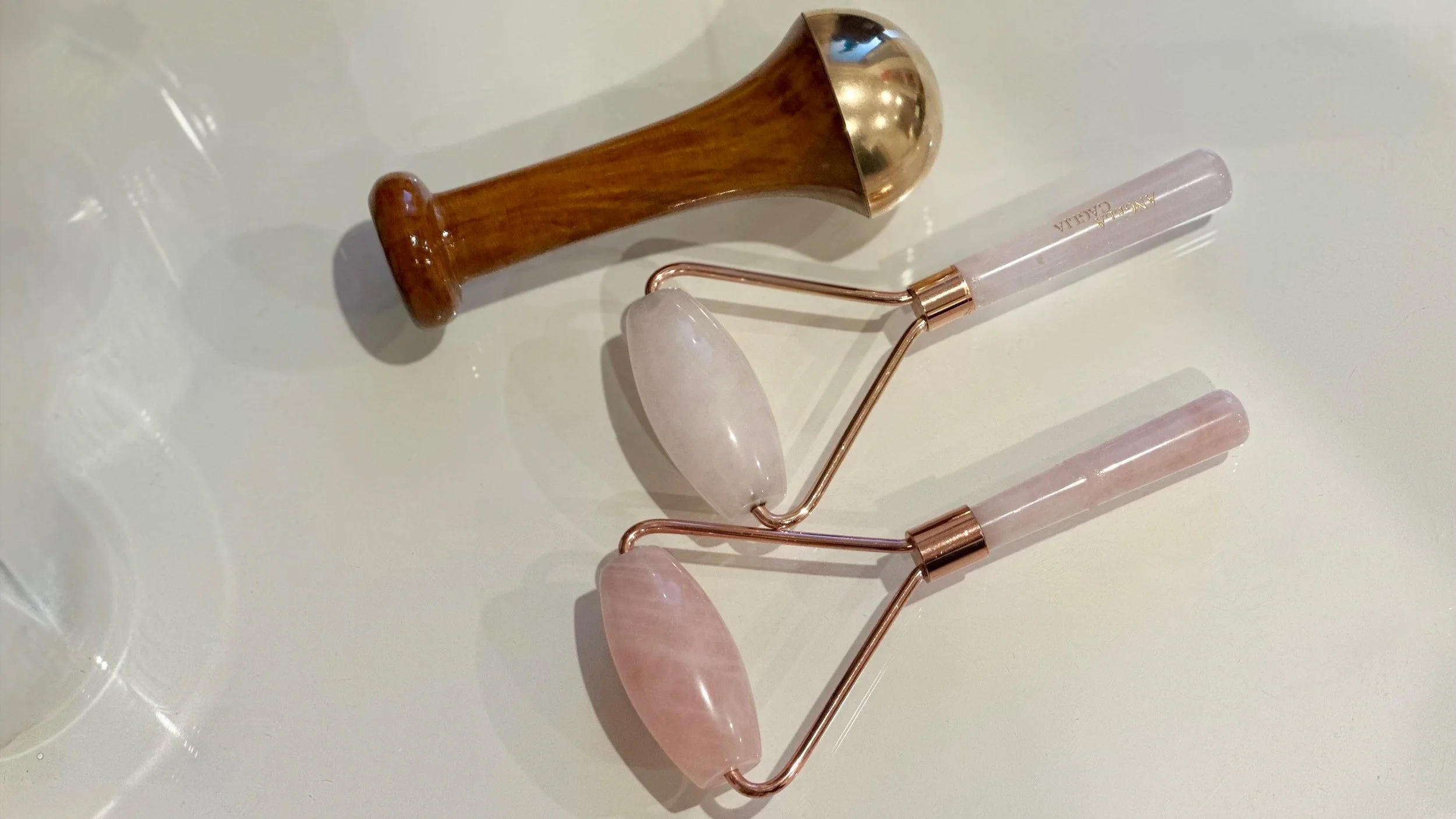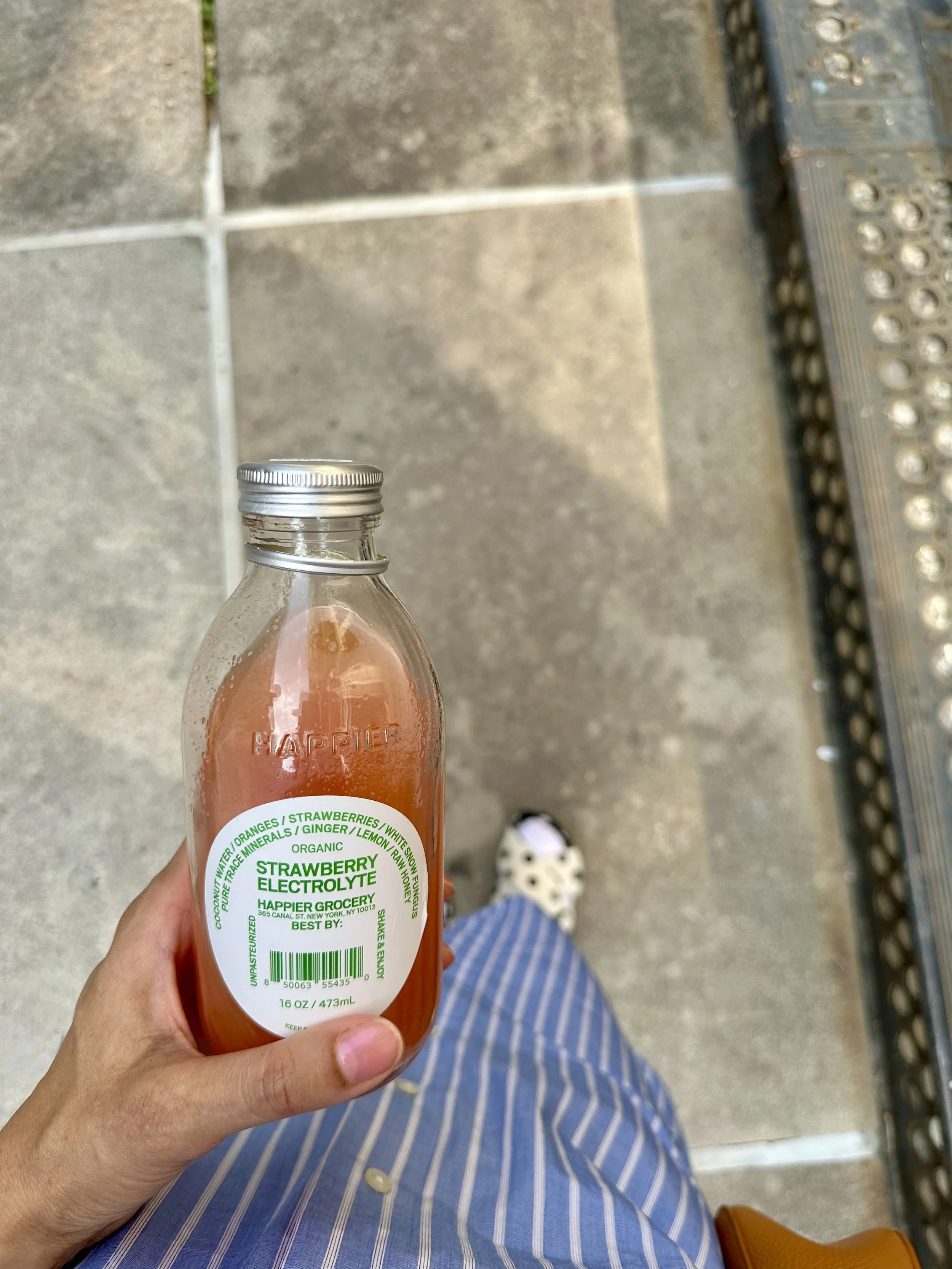Firm It Up: Tight, Taut, or Not?
The “Summer of Barbie” ignited a collective self-evaluation- toned limbs, sculpted jawlines, and the fantasy of gravitational defiance. That hyper-arched Instagram pose? It’s not just about aesthetics. It is about time, biology, and the silent pursuit of staying northward.
Not all skin ages the same. In Ayurveda, the three doshas (Vata, Pitta, and Kapha) determine how skin reacts to time, environment, and inevitable gravitational shifts. Some hold firm well into their forties, while others notice sagging before the mirror even signals change. The reason? Collagen degradation, circulation stagnation, and inflammatory stress- forces at play beneath the skin’s surface.
Firming formulations promise solutions, alternatives to fillers, surgery, or cryotherapy chambers. But do they actually work?
THE SCIENCE
The main ingredient here? We understand that a quick fix is in demand when another beach opportunity is a week away and the diet starts five days after tomorrow.
Over time, we've tested a handful of relatively affordable treatments designed for straightforward at-home care. While we recognize that Ayurvedic science research has more pressing priorities than confirming whether topical skincare can combat aging, the growing influx of "natural" and "ancient" beauty products makes it all the more important to separate fact from marketing hype. Our focus remains on providing honest insights from scientific evidence and user experience.
Face Firmness: The Crusade on Collagen Breakdown
Skin firmness relies on collagen, elastin, and glycosaminoglycans (GAGs)- the architectural scaffolding of youthful skin. Collagen provides structural integrity, elastin gives flexibility, and GAGs retain moisture. Together, they form the tight framework that defies gravity. Until time, inflammation, and enzymatic breakdown intervene.
Collagenase, the enzyme responsible for degrading collagen fibers, accelerates skin laxity, creating the infamous “frog chin” or crepey texture. Elastin fibers, once resilient, stiffen with age, reducing skin’s ability to snap back into place. For Vata skin, naturally dry and prone to premature aging, this process happens faster, leading to early fine lines and thinning skin. Pitta skin, reactive and inflamed, suffers from oxidative stress, weakening collagen faster than expected. Kapha skin, thick and moisture-rich, may delay wrinkles but battles fluid retention, which weakens connective tissue over time.
Sagging is multi-layered, requiring solutions that target structural proteins, hydration, and inflammation- not just surface tightening.
The formulation of Pratima Firming Nutrient Face Mask from urad dal to wheat, though well-known in Ayurveda, robust scientific backing for firming effects. (Image: AKJAM Publishing)
Pratima Firming Nutrient Face Mask is commitment personified. It tightens with unrelenting force, drying like stone, gripping the skin with stubborn determination. The result? A visibly sculpted structure that defies momentary puffiness. Temporarily!
For Vata, dehydration fuels sagging, making the allantoin in this mask a fast-tightening but fleeting solution. Kapha, prone to sluggish circulation, needs deeper stimulation beyond surface tightening. The ingredient lineup- “udad dal, albumin, wheat, allantoin, comfrey, rice, cornstarch, and vitamin C”- offers “nutrient support”, but lacks scientific proof of lasting structural restoration.
Neck, Chest & Décolletage: The First to Fall
Few areas betray age as swiftly as the neck, sagging long before fine lines dominate the face. Unlike facial skin, which benefits from a dense collagen network, the platysma muscle-stretching from the jawline to the collarbone- gradually loses tone, allowing skin to droop.
Estrogen loss contributes to this rapid deterioration, affecting collagen synthesis and moisture retention, which is why post-menopausal women experience more visible neck sagging. UV exposure, pollution, and posture- particularly tech neck from excessive screen time- encourage premature laxity.
Jasmine, oddly absent from the official ingredient list but mentioned on the brand's site, would have provided additional antioxidant benefits. While Uma Flawlessly Firming Neck, Chest & Décolletage Serum evokes nostalgia and sensory delight, its firming effects remain inconclusive. (Image: AKJAM Publishing)
Uma Flawlessly Firming Neck, Chest & Décolletage Serum, rich in alpha-pinene, works to lower inflammatory biomarkers. Infused with pomegranate and frankincense, this oil subtly preserves elasticity rather than actively reversing sagging. Pitta, susceptible to heat-induced collagen depletion, benefits most from its anti-inflammatory protection. Kapha, struggling more with fluid buildup than tightness loss, requires stronger circulation-focused treatments. Vata, fragile and prone to structural decline, needs deeper hydration-based repair rather than firming alone.
While effective for preserving skin integrity, this formula won’t lift what has already fallen- it possibly serves as a defense against future deterioration.
Cellulite: The Silent Inflammatory Epidemic
The nearly 85% of women over twenty affected by cellulite know the frustration- it’s not simply about weight, and exercise doesn’t always erase it. Cellulite is an inflammatory condition, driven by circulation decline, metabolic dysfunction, and estrogen fluctuations.
Fibrous septae, the connective tissue bands tethering skin to muscle, become weakened by chronic low-grade inflammation, allowing fat cells to push through, forming the characteristic dimpling effect. In Kapha types, fluid retention worsens this process, making cellulite appear more pronounced.
Estrogen regulates fat distribution and vascular health. Fluctuations affect the strength of connective tissue. Low estrogen reduces collagen, while excessive estrogen leads to fluid accumulation, worsening visibility.
Microcirculation declines, impairing nutrient flow to affected areas. Without proper lymphatic drainage, toxins stagnate, fueling metabolic endotoxemia. This is where bacterial byproducts leak into the bloodstream, triggering systemic inflammation. The ensuing chronic inflammatory loop makes cellulite stubborn, embedding deeper into connective tissue layers.
Survival of the Fittest Body: Does Ayurvedic Detoxification Work?
Ayurveda identifies Kapha stagnation as a key factor behind cellulite. Circulation-boosting botanicals help counteract fluid retention and poor lymphatic drainage.
Pratima Organic Herbal Body Cleanser/Mask, infused with Boerhaavia diffusa (Punarnava), claims to detoxify stagnant areas. Pairing with Pratima Kali Rai Toning Body Oil, containing mustard, sesame, ginger, and juniper, aligns with Kapha-reducing treatments. While promising, neither formula eliminates cellulite- instead, they may offer prevention, slowing stagnation rather than breaking down established dimpling.
Despite their promising ingredients, results show no reduction in cellulite with Pratima Organic Herbal Body Cleanser/Mask and Pratima Kali Rai Toning Body Oil. (Image: AKJAM Publishing)
Kapha cellulite requires deep intervention, such as heat therapy, massage, and metabolic balance. For Pitta-driven cellulite, where inflammation dominates, cooling botanicals and antioxidants help regulate skin’s reaction to stress. Vata cellulite, resulting from structural breakdown rather than excess fat, responds best to hydration-heavy treatments.
Don’t Be a Tool: Beauty Gadgets & the Lymphatic Drainage Debate
Beauty gadgets have existed long before TikTok trends. Jade rollers, Kansa wands, and lymphatic stimulators claim to firm, sculpt, and detoxify. Does science back them up?
While jade rollers improve temporary lymphatic drainage, their effectiveness depends on frequency and technique. Kansa wands, a staple in Ayurveda, oxidize upon contact. This sometimes leaves a gray residue that brands claim is detoxification, though science remains inconclusive.
While these tools don't replace professional treatments, they bring consistency to self-care, offering a ritualistic approach to firming rather than a scientific breakthrough. (Image: AKJAM Publishing)
Deeper massage pressure and heat-based tools activate circulation, aiding lymphatic drainage for Kapha. Vata needs hydration-enhancing tools, while Pitta types must avoid over-manipulation, as excessive pressure worsens inflammation-induced aging.
Beauty tools don’t replace clinical firming treatments, but they encourage self-care consistency. This offers a ritual-based approach to skin tightening rather than an instant cure. Sorry.
Bottom Line: Gravity, Doshas & Biological Balance
None of these products will mimic Margot Robbie’s Barbie physique or Ozempic-induced metamorphosis, but they do support a level of skin firmness, circulation, and dosha-aligned self-care. Kapha benefits from stimulation, brushing away fluid retention and cellulite stagnation. Vata demands hydration, preventing premature sagging. Pitta skin thrives on anti-inflammatory protection, preserving elasticity against oxidative stress.
Cellulite isn’t just fat. It is a circulatory disruption, inflammatory imbalance, and estrogen-driven metabolic shift. The key to lasting firming isn’t surface treatment- it is deep biological restoration. Gravity is inevitable, but navigating it with grace? That’s where the power lies. And if beauty is anything, it is effortless.




















